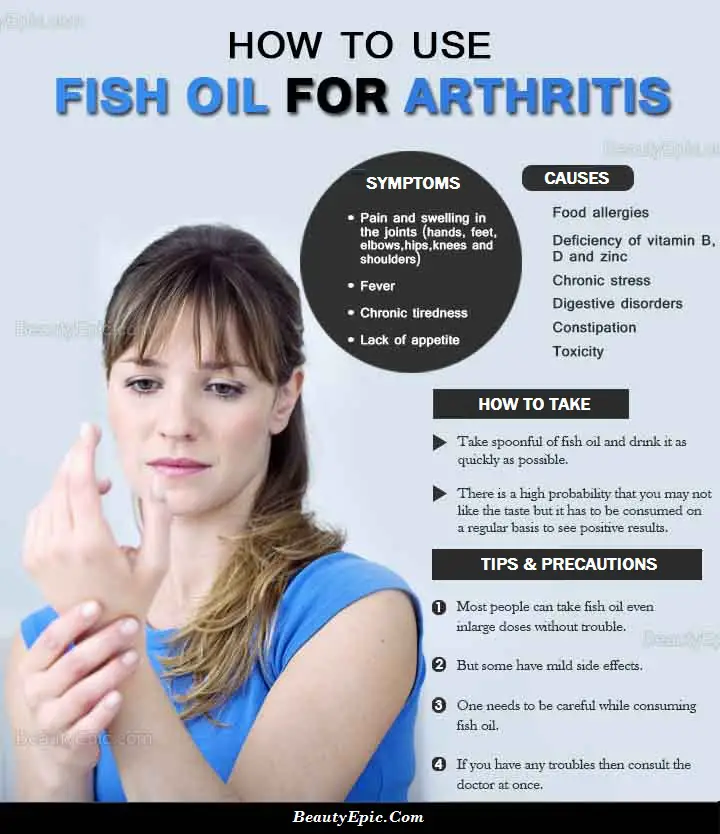
Important: This article is for informational purposes only. Please read our full disclaimer for more details.
Arthritis is very common but less well understood disease; it generally means any type of disease that affects the joints. Actually, “arthritis” is not a single disease and it refers to joint pain or joint disease. People of all ages, sexes, and races can have arthritis. It is most common among women and occurs more frequently in people of older ages. Arthritis symptoms usually include swelling, decrease in movement, pain, stiffness, etc. Initially the symptoms of arthritis may come and go. The symptoms can be mild, moderate, or severe. However how effectively using fish oil for arthritis pain is discussed here.
Does Fish Oil Help To Relieve Arthritis?
Arthritis a disease where the joints of our bones swell and they become too painful to touch. For relief your doctor will prescribe you various medicines and some more to fight the side effects of the medicines. An easier way would be to include an anti inflammatory diet in your food. Some reasons why you can depend on fish oil for treating your arthritis is given below.
- Fish oil contains two types of omega-3 fatty acids; they are DHA (docosahexaenoic acid) and EPA (eicosapentaenoic acid). EPA and DHA can reduce inflammation, which is the basic cause of swelling and pain in patients.
- Fish oil is used for treating rheumatoid arthritis.
- When you consume fish oil regularly you are less likely to develop arthritis.
How To Use Fish Oil for Arthritis?
Fish oil comes from fish like salmon and tuna which are cold water fish. Some of these can have high levels of mercury, so it is better to do your research before picking up a supplement. Use care and check with your doctor before taking fish oil with any other alternative or complementary remedies as well. There might be medicine interactions, which needs to be watched and taken care of.
Directions For Use Of Fish Oil for Arthritis
1. Direct Consumption Of Fish Oil for Arthritis
This is the easiest method of consuming fish oil.
- Take spoonful of fish oil and drink it as quickly as possible.
- There is a high probability that you may not like the taste but it has to be consumed on a regular basis to see positive results.
2. Fish Oil Capsules for Arthritis
These are easily available in chemist shops and do not generally have a bad after taste.
- Consume the fish oil capsules as instructed by your doctor.
3. Fish Oil With Herbal Flavors for Arthritis
This tends to improve the taste of the fish oil.
- Take three to four tablespoon of fish oil and mix it with any herb as per your preference.
- You could also add ginger juice.
- Consume one spoonful of this mixture.
[ Read: How Does Turmeric help Arthritis?]
Tips And Precautions:
- Most people can take fish oil even inlarge doses without trouble. But some have mild side effects. One needs to be careful while consuming fish oil. If you have any troubles then consult the doctor at once.
- It causes belching and leaves a bad taste in the mouth
- It can also result in heartburn, nausea, and diarrhea in some cases.
Due to high levels of mercury content, fishes like shark, swordfish, king mackarel, etc., should be avoided by pregnant women even though they are a good source of fish oil.
You Might Also Like:
- How To Take Cherry Juice For Arthritis
- Yoga for Arthritis – 9 Best Yoga Poses for Arthritis Relief
- Top 10 Foods to Help Beat Rheumatoid Arthritis Inflammation
- Ginger for Arthritis: Does It Work?
- 6 Best Exercises to Prevent Varicose Veins
- Foam Roller Exercises – 9 Best Moves and Its Benefits
- Exercises For Saddlebags – 6 Best Moves to Lose Saddlebags
- 30 Small Things That Make You Happy
Image:- 1

















